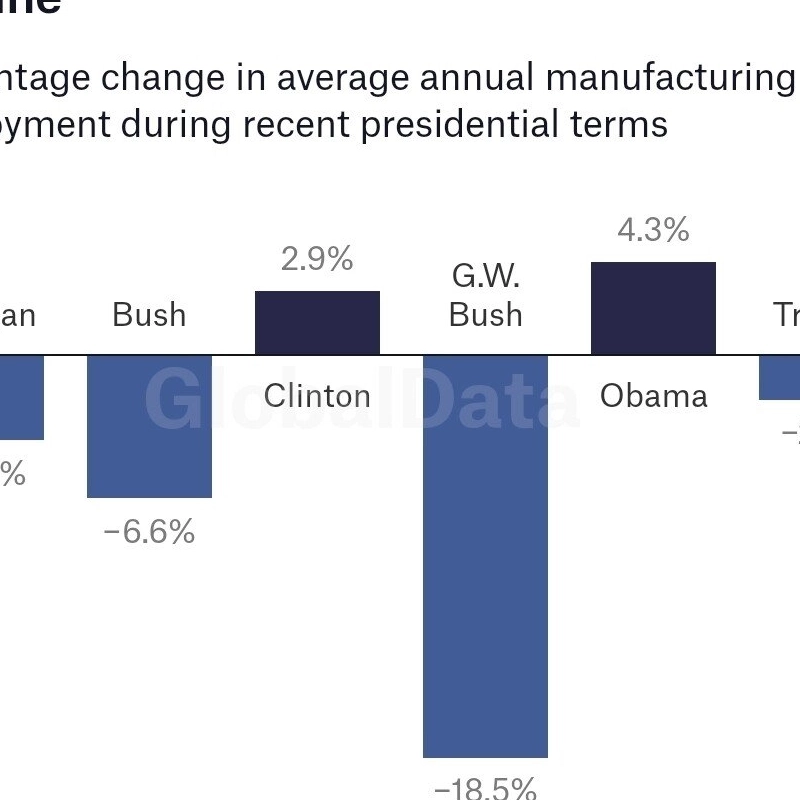




Then these questions will arise. If this is reversed, wouldn’t the golden age of American manufacturing return again?

This is probably one of the thoughts of many Trump supporters, but a very few?
But it is difficult to change the big trend.

Because developed countries other than the United States that have implemented what I mentioned above are all following a similar path.
.
Japan, which overcame the oil shock, France, which was in direct opposition to the U.S. economic policy, and Germany, which has the world’s highest level of manufacturing technology, are all experiencing decline in their manufacturing industries, especially the traditional manufacturing industries that the U.S. enjoyed in the 1960s.

Low-value-added processes are already famous for being outsourced to Southeast Asia and other countries.

Although the country has a reputation for intervening in its own companies and taking industrial protection measures, the share of manufacturing has fallen further than in the United States.
I did.

Even Germany, the Fraunhofer model, has long since transferred production and assembly processes to Eastern Europe or China. Recently, even factories that focus on high added value are closing down due to cost issues.

Japan’s global manufacturing share falls from 16% to 4%
]
Of course, except for the extremely wealthy upper class, something reasonably cheap and good is best.
That’s why American manufactured products are losing out to Japan and Germany, and now Japan and Germany are losing out to China.

And improvements in automation and manufacturing technology
There are various attempts to lower production costs, such as reducing production and logistics costs through supply chain integration, but it is difficult to overcome the nearly 10-fold difference in labor costs.
They say China is also more expensive than Southeast Asia or India.
Compared to rural areas in China, the wage is between 1.5 and 2 times the minimum wage, a level that can be closed to some extent through economies of scale and automation.

If you think about the income of developed countries when their manufacturing industry was at its peak, the income of the United States and Western Europe at that time was at the level of current China, Mexico, or Brazil.


Cheap, low-value-added processes, such as clothing, are to a certain extent passed on to Southeast Asia and Africa who are less prosperous than they are.

If you look at the total number of manufacturing jobs, it is rather negative.
Even if there are some tariffs
It is too expensive to produce in the United States, where labor costs are much higher and there are many labor regulations, and people do not buy expensive products.
3 line summary:
1. American manufacturing was the foundation of America’s golden age, but declined due to cost issues and various geopolitical events and policies.
2. Although they are calling for the revival of the manufacturing industry, France, which has a stronger industrial protection policy than the United States, and Germany and Japan, which drove out American manufacturing, are all without exception, with China’s low-price offensive leading to a decline in their share of manufacturing.
3. Even during the Trump era, manufacturing jobs in the U.S. have decreased, and even China is outsourcing low-value clothing production to countries less prosperous than China. Price competition is impossible unless workers in the U.S. or developed countries receive 800 won per hour.
